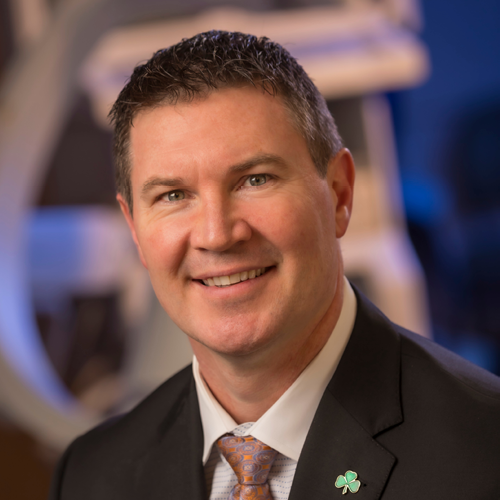Osteoarthritis: Causes and Conservative Treatments
 Osteoarthritis: Causes and Conservative Treatments
Osteoarthritis: Causes and Conservative Treatments
By Dr. Joseph McCormick, Orthopedic Surgeon
Dr. Joseph McCormick is a board-certified orthopedic surgeon. He is seeing patients at our Appleton orthopedic office, located in Ascension NE Wisconsin – St. Elizabeth campus. Schedule an appointment with him here.
Many people experience pain from some form of arthritis at some point in their lives. Osteoarthritis is the most common form of arthritis and occurs when flexible tissue at the ends of bones wear down.
Symptoms

Image courtesy of Sanofi-Aventis
Clinical symptoms include joint pain associated with injury, overuse or advancing age. Two general features include loss of articular cartilage (the “joint space” seen on weight-bearing X-rays) and formation of bone spurs. Bone spurs are a secondary reaction to osteoarthritis and are usually not the cause of pain. Patients often ask if the bone spurs can be removed, but if removal is done without addressing the cause of arthritis, they would simply grow back.
The true complaints of pain surrounding arthritis include “achy” pain, end of day stiffness and intermittent swelling. Many patients complain of good days and bad days, meaning the symptoms shift from day to day or even week to week. These increased achy shifts are sometimes associated with overuse, recent injury or even changes in the weather.
Risk Factors
In general, the stress of any joint is a combination of the load applied multiplied by activity. Other risk factors include being overweight, family history, old fractures/injuries and certain natural problems of joint alignment. Women are slightly more commonly affected by osteoarthritis than men.
Treatments
There is a myriad of treatments that can be used for arthritis pain, and a few treatments that are currently experimental or unknown.
- Activity Modification
A good start to conservative arthritis treatment would be to avoid activities that cause increased pain and avoiding lifting or carrying excessively heavy objects.
For the lower extremities, limit walking or use assistive devices such as a cane, and avoid stairs as much as possible. For shoulder arthritis, avoid heavy overhead lifting.
Low-impact exercises that do not provoke an increase in pain can be useful in conditioning muscles and maintaining natural flexibility. Patients can apply ice or heat to the affected joint. Over-the-counter braces can be purchased and worn for support. Many of my patients participate in specialized arthritis fitness classes such as pool aerobics, chair yoga, or Silver Sneakers classes.
- Simple Medications
Pain relief is often achieved with Tylenol or non-steroidal anti-inflammatory (NSAID) medications. Keep in mind that heavy use of NSAIDs for more than two weeks should be noted with your primary care doctor.
Capsaicin creams may help reduce pain, and some doctors use lidocaine patches near the painful joint. Nutraceuticals are a new brand of medicines aimed at joint support by offering an oral version of proteins felt to be the building blocks of cartilage (glucosamine and chondroitin sulfate). There are various brands available and as of yet, they are not studied by the FDA, so the chemical compositions are varied.
Your doctor may recommend a brand for you, or you could check with a trusted pharmacist or a friend who has had success with supplementation in order to find what works for you.
- Injections
Steroid injections or viscosupplementation injections can be used to diminish inflammation and provide long-term pain relief. Injections are offered at your doctor’s office and are typically well tolerated for pain relief. Steroids usually provide up to three to six months for relief, and the newer viscosupplementation shots can last up to a year.

Image courtesy of arthritis-health.com
Some specialists are experimenting with stem cell aspirates and even platelet-rich plasma injections to battle arthritis pain. Since the source of these injections come from the patient in the form of marrow aspirates or peripheral blood draws, they are considered natural alternatives to traditional medical choices.
The Iovera° treatment uses a liquid nitrogen needle to freeze pain receptors near the affected joint, for non-narcotic, non-steroidal pain relief lasting up to three months. Subchondroplasty is another needle treatment capable of pain relief for bone marrow lesions, a specialized condition associated with some arthritis and seen most easily on MRI.
Your orthopedic provider at OSMS is a skilled resource for newer conservative treatments, and as always, are a trusted source of surgery options should the need arise.
Schedule an appointment with an OSMS Orthopedic Physician here.








